Beacon Villages

Belstone - South Tawton - South Zeal - Sticklepath
Under Cosdon Beacon Dartmoor Devon UK
Under Cosdon Beacon Dartmoor Devon UK
| South Zeal Village | |||
| There are several ways into the village. If you come from Exeter, you will probably get off the A30 at Whiddon Down and then proceed for a couple of miles until you take a right turn, down the hill, through Shelley. If you come from Throwleigh, you come up the Throwleigh Road to Ramsley, then go under Dry Bridge and get into the village via Ramsley Lane. Or you could avoid Dry Bridge and turn left onto the 'old' A30 and then turn right, either at Prospect or further on at Ford Cross. If, however, you are coming from Okehampton, then you will come in the opposite direction along the 'old' A30, through Sticklepath and take a sharp left turn after the Taw River bridge. Is it any wonder we have van after van of deliverymen , blocking our lanes, asking for directions? | |||
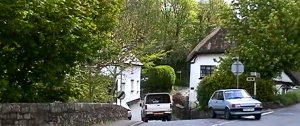 |
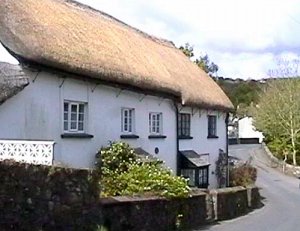 |
Passing the Tarka Trail lane (which leads to South Tawton village) you go up a hill through fields usually populated with sheep and reach Zeal Head. At the cross roads is a garden with, each year, the loveliest display of azaleas. A short way past this is Townend, the most westerly house in the village until the 1930's. Further down the hill is the thatched King's Arms, one of the oldest buildings in the village, dating from 1670. This public house was a regular stop on the way from Plymouth to Exeter. |
|
| When you come out of the Kings' and make your way, thankfully downhill, you will come to the unglamorous but very well used Victory Hall, the hub of village life (well, outside licensing hours). From here you have a good view of the Market Cross, standing at the end of the churchyard. This stone cross was erected as a reminder of South Zeal's medieval market, established by Charter in 1298, and dates from the 14C. Behind this is St. Mary's Chapel which housed a village school for 200 years until the national school was built (1874).St Mary's Chapel was a medieval chantry chapel attached to South Tawton church. It was rebuilt in 1713 and restored in 1877..On the other side of the road, on the corner is a large white house (Bessie's Cottage?) |
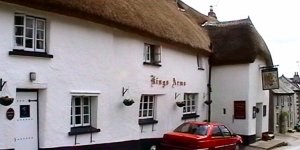 |
||
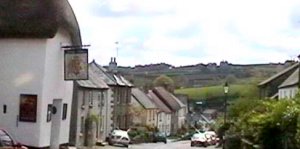 |
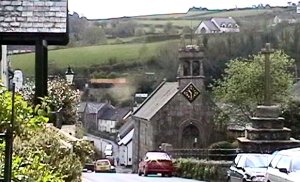 |
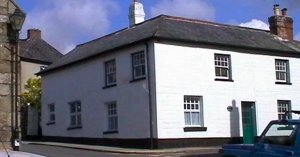 |
|
.jpg) |
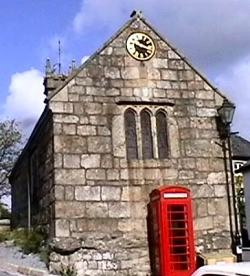 |
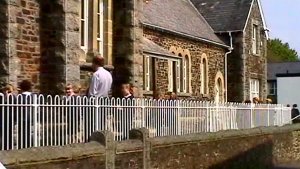 |
|
| If you turn left here you will come to South Tawton County Primary School which boasts one of the oldest working school bells in Devon. The buildings date from 1875 (as do some of the teachers, I am informed by the pupils). Beating a swift retreat back to the (main?) road, you come to the one remaining village shop, The Country Store & Tea Room. Only a year ago we had two shops and a Post Office. Now, we have just the one (excellent) shop, which also contains a tea room and the village computer (our own cyber cafe). |
|||
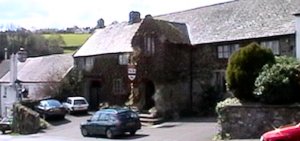 |
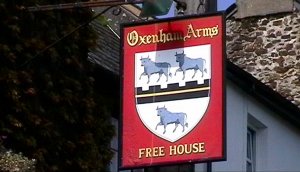 |
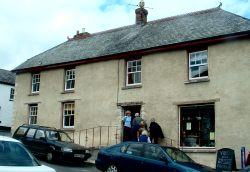 |
|
| On The opposite side of the road, is the Oxenham Arms, once the home of the Burgoyne family. The building dates from the 12C. The Tudor front and doorway date from 1510. In one room there is a large prehistoric standing stone and the original house was built around this. The dining room is haunted. Charles Dickens stayed here while writing The Pickwick Papers and Charles Kingsley's book Westward Ho! mentions the Oxenham family's legendary white-breasted bird which is seen before a death in the family. (This is not to be confused with ...) Come on, drag yourself out of the Ox and make your way down the hill and you will come to Mill House. Following the Charter granted at the end of the l3th century, weekly markets were held here, n the centre of the village and it is believed that Mill House was the site of the market office. You can turn in here and follow the footpath to Millfield and on to Ramsley (For this you will need good footwear unless it is very dry and quite often it isn't!). Millfield was the site of a corn mill and is one of the Burgage Plots. To the left, just after the footpath reaches the road, is Washing Place. This and the adjacent Tucking Mill Field are reminders of the woollen industry, that is an important part of the village's past. |
|||
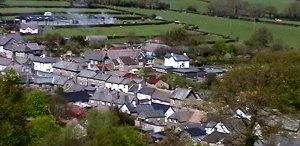 |
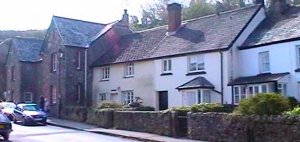 |
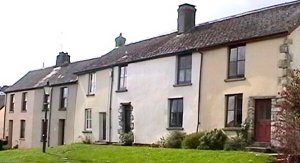 |
|
| Just down the road, you will see the gantry from which the sign of the London Inn hung. It closed in 1908 under the Government's 'buy out' scheme, to reduce the number of public houses nationally. At this end of the village cottages frequently have rooms large enough to hold a loom, a legacy of that once important woollen industry. You can conclude your stroll at the Bridge over the stream that provided water for com mills and the Tucking Mill. |
|||